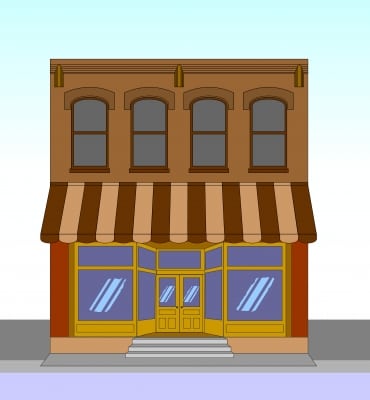Placement, placement, placement!
Product placement is one of the essential fundamentals of in-store merchandising.
In the realm of impulse buying behavior, much of the enticement takes place when shoppers are exposed to a greater number of products and services. Have a layout where customers can walk directly to the counter and you’re clearly missing out. Likewise, frustrate them by making browsing difficult and you’re in for the same result.
But as arduous as product placement can be, there are ways to make it work. So in a bid to capture customers in a hurry and engage those that are spending time, here are some product placement strategies that can set your store apart:
Store entrance
The entrance is the first visibility for any type of store: it’s the ideal place to display products. Even the best in-store placement fails to woo customers if the store entrance has little curb appeal. Target effectively capitalizes on impulse pick-ups with its entrance – its entryway is filled with low-ticket items ranging from $1 to $15.
While it can be effective to give shoppers an understanding of the full range of products available inside, sometimes taking a minimalistic approach can achieve similar results. Invest in an eye-catching entrance, and make sure signage, products and lighting make the takeoff smooth by telling a single luring story.
Shelving and flooring
Some products should be placed in subtly different surroundings than others. Even a slight variation of the surroundings in different departments, like having linoleum flooring in one section and wood flooring in the next, can be enough to nudge shoppers and spark a little temptation.
Also, being smart with store displays shelves can also keep customers on their toes. Most stores utilize three-tiered floor shelving as these units are easily movable. Specialty items are placed at the top, while the eye-level is reserved for best-sellers – the trusted products that customers buy on impulse. The bottom shelve is for products in bulk quantities and discount items. According to Creative Displays Now!, store owners can customize shelf-floor display to make sure the products jump and grab customer attention.
Side and till placement
Some products can be placed next to others to achieve higher sales. For example, nachos and dips are often placed very close because the purchase of one has the probability of increasing sales of the other. Side placements should work well with most items that complement each other.
Another smart strategy is to place season- or weather-dependent products next to tills. This strategy is implemented by many supermarkets: it will be umbrellas on rainy days, sunglasses on sunny days, and an array of Christmas essentials during the holiday season. Placing products that are likely to be purchased on a specific day is a recipe to increase sales.
The strike zone
The strike zone is the sweet spot where promotional items should be stocked. It is an area where the customer slows down to pick items. Larger stores place promotional items on the ends of aisles, where they catch the eye as the shopper walks toward an aisle.
Strike zone should consist of common or affordable items. And it should be within 5-10 feet of the checkout – essentially within reach for the customer waiting in queue to purchase their goods.

